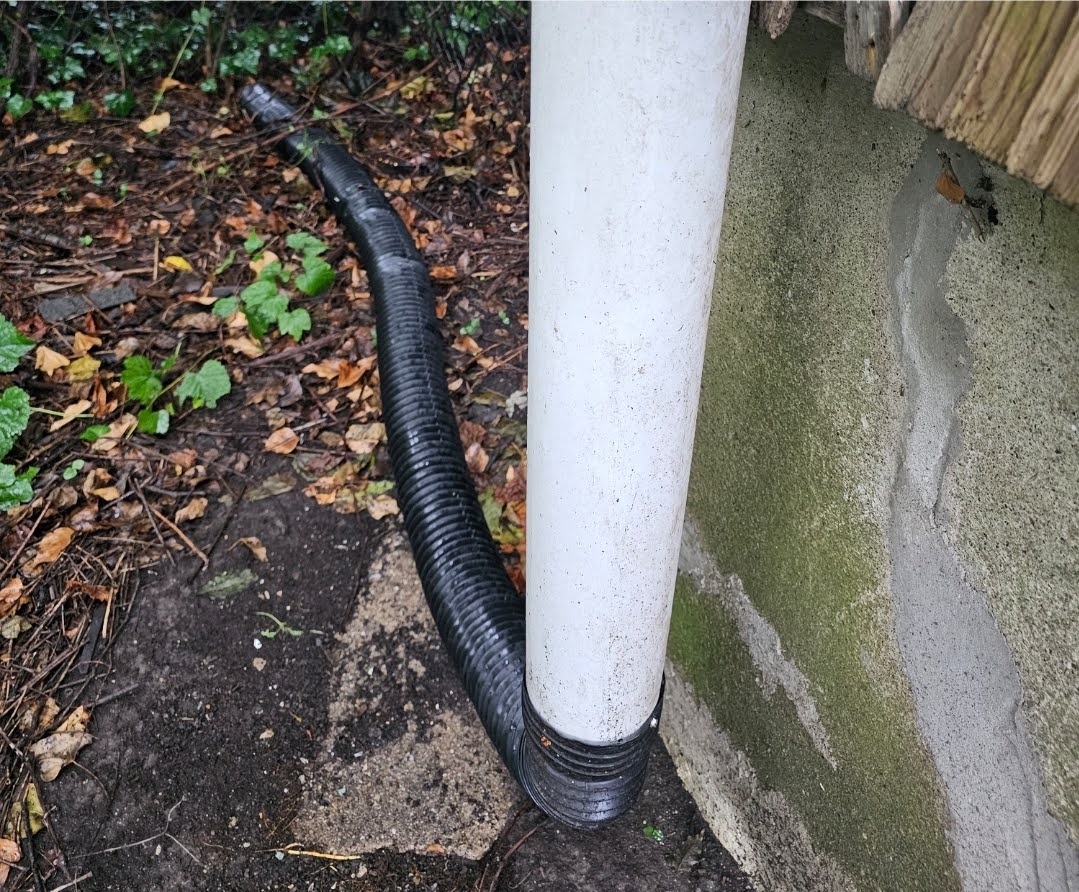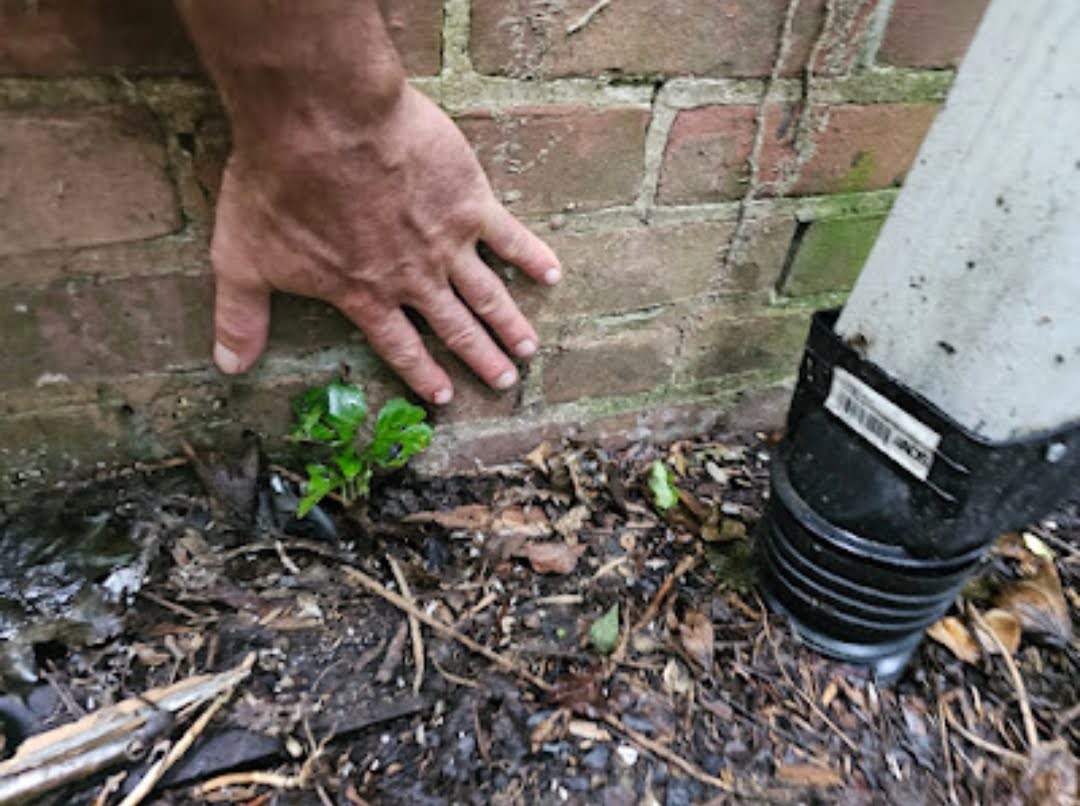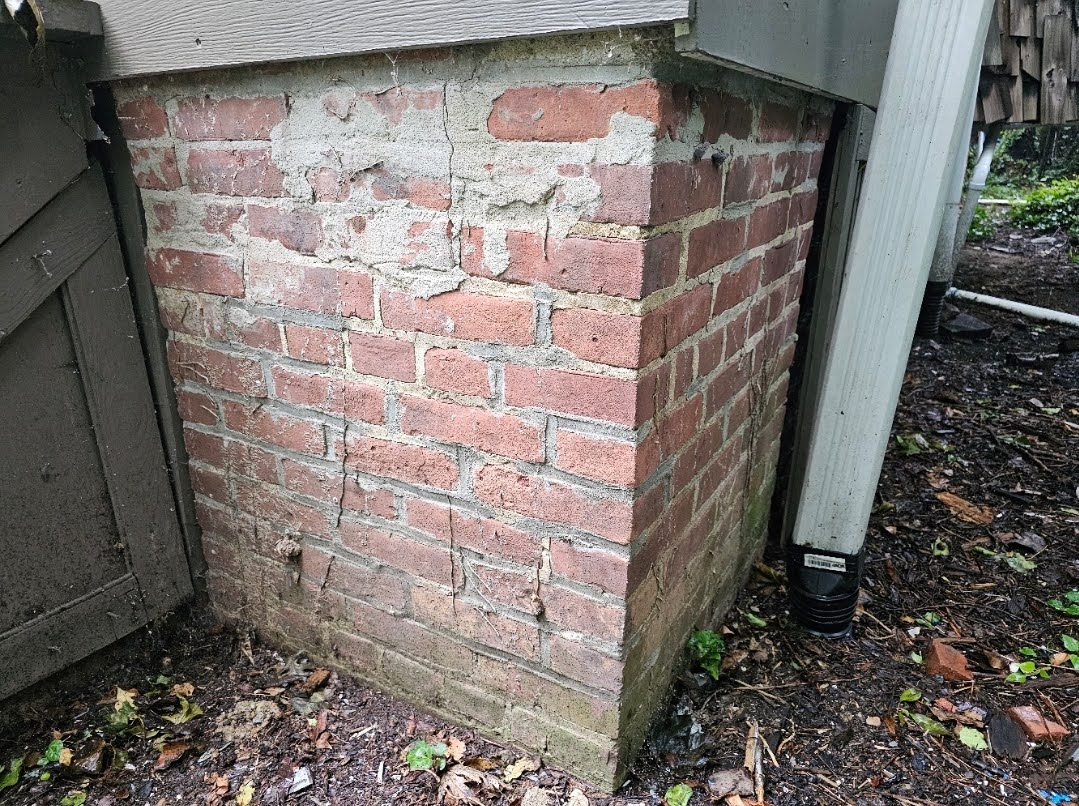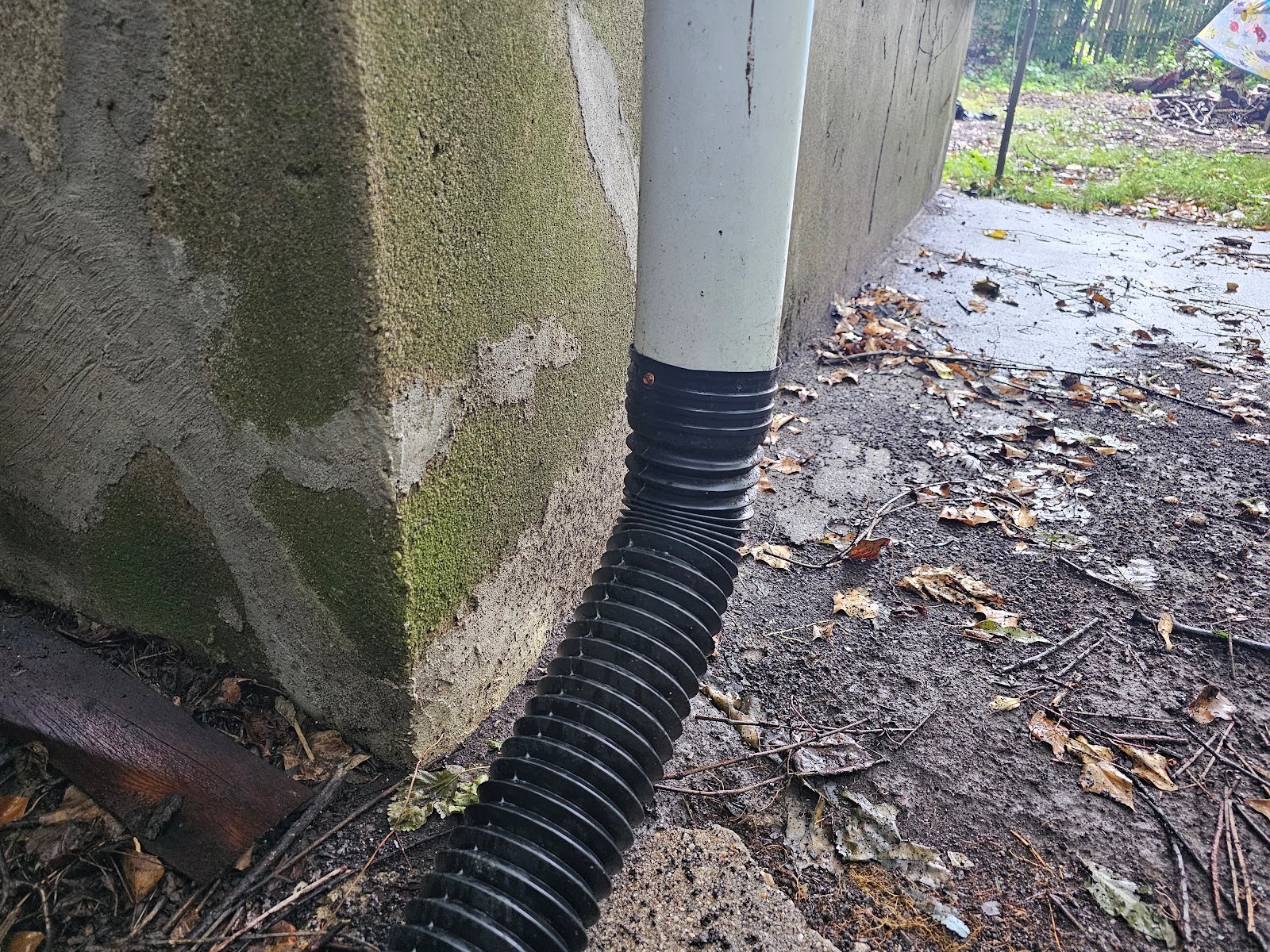Underground Foundation Deterioration – Part II
In a previous blog, here on our website, this past week, we looked at moisture and associated deterioration at the side of a foundation. Building foundations generally experience a high degree of moisture, particularly in our geographic area where soil type C & D are very common and generally contain a moderate to high degree of clay and silts.
The picture below shows a downspout with a corrugated extension that will lead water farther away from the building foundation. Many historic buildings in Washington DC, as we explained in last week’s blog, we’re built with underground rain leaders which would carry water far away from the bounding foundation to public sewers. In many cases though these underground rain leaders have been damaged or deteriorated over the many decades since the original construction and are no longer functional. And many of those cases as well, the water from the roof of buildings now drains directly on top of the exterior grade and ends up saturating the soils around the foundations.

Soil basically acts like a sponge, with an ability to essentially hold (and transmit) water. The amount to which soil is affected by moisture depends on several factors. A list of some of the main factors follows:
- Porosity: The space between soil particles can hold water. Clay soils have high porosity and retain more water than sandy soils. Porosity and the degree to which poorest soils will retain water is not based just on a single variable though. Soil comprised of larger particles may have a greater area or volume of porosity, overall, but instead of retaining water, beyond a certain size may actually drain water more than it retains water.
- Capillary action: capillary action may cause water to move upward through tiny spaces in the soil, defying gravity. The phenomenon of rising damp is a key part in understanding masonry deterioration, particularly with foundations. Rising damp is a common source of masonry deterioration at the base of walls, above grade or just above the foundation.
- Hydraulic conductivity: Hydraulic conductivity describes how easily water moves through soil. It varies based on soil type and saturation levels. Hydraulic conductivity is related to or often associated with both capillary action and porosity of soils.
- Water potential: Water potential in soils affects soil stability and moisture movement around structures by analyzing how water moves through soil and its availability to be absorbed or drained. This potential is impacted by factors like soil moisture content, the presence of solutes, and the soil structure.
At a different side of the same building, in the picture below, you can see where a corrugated pipe has been installed underground to lead water away from the building foundation. The building foundation wall remains dry, even right in the middle of a rainstorm. It happens to be dry only because the front porch roof overhang or eave extends just efficient enough to keep water away from the soil directly against the foundation, in vertically falling non-wind driven rains. Even in cases like this though water can still permeate farther down to the foundation easily through the ground.

A picture showing another angle of that same wall follows below.

For building foundations, the most relevant components of water potential are matric potential and gravitational potential. Matric potential refers to the attraction between water and soil particles, which affects how tightly water is held within the soil. Soils with a high matric potential can retain more water, leading to increased moisture content near foundations, which can cause issues like swelling, especially in clay soils. Gravitational potential influences how water drains through the soil profile. If water potential is high near the surface, water may not drain effectively, leading to pooling or saturation around foundations, which can compromise the integrity of the structure and cause problems like differential settlement or erosion.
In this particular case, they installed a concrete walkway right next to the foundation. This type of installation of hardscape on the grade adjacent ground with slope to the outside can help water at least be managed a few feet away from the foundation. This small distance, to an extent, encourages dispersion of that water away from the foundation, but it’s not a silver bullet type solution because it still can have limitations and shortcomings. Generally, foundations that experience heavy saturation and leakage, cannot be fixed by simply installating of hardscaping around the foundation. Instead, in those scenarios, it may be also important to install a waterproofing system at the foundation, one that works in a passive manner to an extent and then often tied into a collection crock and some pit with a pump to discharge to the exterior of the building.

If you are looking for a masonry restoration contractor that takes historic preservation seriously, reach out to us. Our company can help.
You can reach us by telephone at (202) 796-7644 and you can reach us by email from the contact form on our website at https://duponttuckpointingmasonrydc.com/contact-us/.




